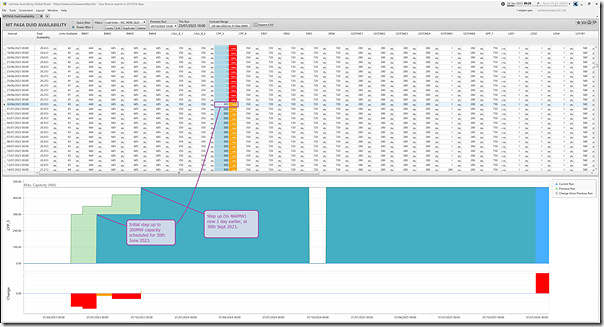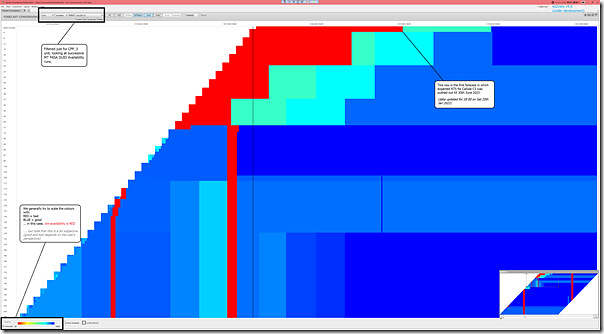* apologies for earlier typo in the title – this article relates to C3, not C4
Back on 29th December 2022 following a tip from a reader and an update from CS Energy, I’d written about ‘More delays in expected Return to Service (RTS) for both Callide C3 and C4’.
At the time of that that article, the expected return date for Callide C3 was 8th May 2023.
Yesterday I was speaking with a prospect interested in ez2view and happened to show them the ‘Generator Outages’ widget that was released in 2022 with ez2view v9.5. Amongst other things I’d noticed that the return to service date for Callide C3 had slipped further backwards … now back at 30th June 2023.
This change is illustrated below in this snapshot from the ‘MT PASA DUID Availability’ widget – which has been filtered for all coal units, but with the chart just focused on Callide C3:
I’ve compared for the ‘Previous Run’ the same run used in this article on 29th December 2022.
At present there’s no further media release on the CS Energy website to provide more context on this slippage.
—
PS1 corrections
This article was originally published with the title incorrectly noting C4, instead of C3
—
PS2 at 15:30 on Tuesday 24th January
We’re currently working on an upgrade to an upcoming ez2view v9.6 release.
Amongst other things, we’re using this upgrade to extend the functionality of the ‘Forecast Convergence’ widget to include the MT PASA DUID Availability dataset, filterable to a user-selectable group of units*.
* caveat being it’s Scheduled units only, unfortunately not Semi-Scheduled units as well.
I thought it would be useful to share the following image of how it currently looks filtered down just to Callide C3:
Especially for ez2view clients reading this article, interested in your thoughts about how this will help you visualise the multi-dimensional nature of these successive updates to forecast availability?
Hints to the interpretation of this data:
1) The ‘Forecast Convergence’ grid is designed to help readers ‘look up a vertical’ to review that other dimension of time.
2) Across all the various data sets accessible in this model, we try to scale the colours with RED being ‘bad’ and BLUE being ‘good’, but that’s a bit subjective. In this case, 0MW availability for Callide C3 is coloured RED.
3) Each of the successive updates for the return to service date are hence all visible in the step changes between rows in the table, with the most recent being published for 18:00 on Saturday 20th January 2023.
—




Having had experience with a similar structural failure of a mechanical draft cooling tower many years ago the timeline does not surprise me too much. Even though the tower is not that old as these things go, the more they will have looked the more cracked and rotten timber they will have found (yes these things are big timber structures) and trying to remove / replace / reinforce damaged timbers in a very constrained space says it is a very slow process. Particularly when you are coming at it from a standing start. If you knew this was coming at you and you had a complete kit of timber to hand it is easier, cheaper & quicker to pretty much demolish and rebuild the timber bits and install new fill, but as a break down job it’s just hard work.